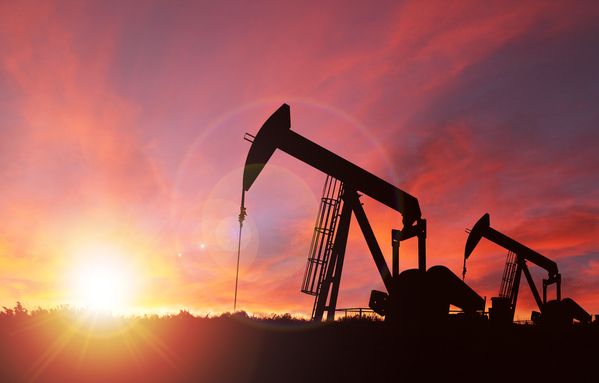
Image source: Getty Images.
When it comes to rig owner Helmerich & Payne (HP 0.63%), there are a lot fewer concerns about the long term prospects of the business. The company has a great fleet of rigs ready to tackle the complex jobs that shale reservoirs require and a great looking balance sheet. That doesn't mean that the company is completely devoid of risk, though. Here are three things that have the greatest risk of sending Helmerich & Payne's stock in the wrong direction.
Too much reliance on U.S.?
Looking at the company's fleet of rigs, the first thing that pops out is the fact that a vast majority of its operations are land based rigs in the United States. Even last quarter when the company's U.S. land rigs had one of its worst results in a long time, it still represented more than 75% of operating income. This is something that will be exacerbated even more when Helmerich & Payne puts more of its U.S. based rigs to work.
This isn't necessarily a bad thing, it just happens to be the bet that Helmerich & Payne's management has made on the future of oil and gas drilling. That being said, any situation where oil and gas activity shifts away from the U.S. in favor of other sources could lead to continued weak results for the company's bread and butter segment.
Based on the technology and current oil and gas reserves today, shale drilling in the U.S. is one of the lower cost producers. The one place that continues to hold a lead in low cost drilling is the Middle East and many of the OPEC member states. If these players were to increase production, then it would maintain pressure on prices and prevent drilling activity.
Permanent oversupply?
One thing that has received a lot of attention is the rapid decline in total active rigs in the U.S. Today, the count is somewhere in the low 500s, which historically speaking is very low. What this number doesn't reflect, though, is that land drilling in the U.S. has become much, much more efficient, and the amount of oil and gas produced per rig is increasing dramatically.
Before shale, conventional oil and gas drilling entailed drilling a single well on a pad vertically into a reservoir and letting the natural pressure of the reservoir bring hydrocarbons to the surface. This type of drilling meant that it took a lot of rigs drilling not that far from each other. When we started tapping share reservoirs, a lot of this drilling theory was still in place. As producers have thought about the process more and more, that thinking has changed.
Today, the ability to turn a drill bit 90 degrees and drill horizontally for up to two miles means that companies can space drilling pads further away from each other. Also, the advent of mobile drilling rigs means that a company can drill more than a dozen wells from a single pad with just one rig. On top of that, better fracking techniques are allowing producers to get more oil and gas per well. Add all of these factors together, and you get more oil production per active rig than ever before. The big downside for land drillers, though, is that it requires less of their rigs to achieve the same production levels.
There is a chance that with more efficient drilling practices, we may not need as many rigs as we did before to achieve the same goals. This would mean that the oversupply of rigs is much, much greater and could last much longer than originally anticipated.
Continued pricing pressure
Helmerich & Payne has hung its hat on the fact that it has a modern fleet of rigs, and it has received a market premium for those rigs. No doubt, there is reason to believe that Helmerich & Payne will benefit from the gradual shift toward shale drilling. Its available fleet of rigs that meet the specs for shale drilling is greater than all of its largest competitors' combined.
Trouble is, the high spec rigs that its competitors do have available to drill are just as capable, and producers have the pick of the litter today with so much available equipment. This gives producers a lot of leverage when negotiating new contracts and could likely lead to lower contract rates for rigs. Since a lot of the costs associated with rigs are fixed, lower contract rates for Helmerich & Payne and others would ultimately lead to much lower margins, which in turn could drastically impact financial results.
What a Fool believes
Too much exposure to the U.S. market, an oversupply of rigs, and pricing pressure are probably the biggest foreseeable issues that Helmerich & Payne will face and are the most likely to impact the company's stock price. The one reason to have hope that these issues won't have a huge impact on the company overall is that Helmerich & Payne's management team has been dealing with these threats for decades, but has still managed to deliver results. Longer term, these are all manageable issues that investors should be aware of, but certainly not something that should keep them up at night.




